Pop music is a dynamic and catchy genre that captures the essence of popular culture, with infectious melodies and relatable lyrics that resonate worldwide.
Subgenres of Pop
History of Pop Music
Famous Pop Artists
Famous Pop Producers
Famous Pop Audio Engineers
Production & Mixing Tips
Subgenres of Pop
Hip-Hop Pop
The fusion of hip-hop and pop has given rise to a genre that blends catchy hooks and melodic rap verses. Hip-Hop Pop artists like Drake, Post Malone, and Cardi B have dominated the charts, seamlessly incorporating elements of rap, R&B, and pop into their music. With infectious beats, clever wordplay, and relatable lyrics, Hip-Hop Pop has become a dominant force in contemporary pop music.
Latin Pop
Latin Pop has experienced a massive surge in popularity, blending Latin rhythms and instrumentation with contemporary pop sensibilities. With artists such as J Balvin, Bad Bunny, and Shakira leading the way, Latin Pop offers infectious melodies, vibrant beats, and a fusion of genres like reggaeton, salsa, and bachata. The genre has made a significant impact globally, bridging cultural gaps and inspiring dance floor hits.
K-Pop (Korean Pop)
K-Pop has taken the world by storm with its infectious beats, stunning visuals, and captivating performances. Originating in South Korea, K-Pop combines catchy melodies, synchronized choreography, and a diverse range of musical styles. With groups like BTS and BLACKPINK leading the way, K-Pop has gained immense global popularity, captivating fans with its energetic and vibrant performances.
Indie Pop
Indie Pop represents a more alternative, independent approach to pop music. Characterized by its introspective lyrics, dreamy melodies, and lo-fi production, Indie Pop offers a more intimate and personal listening experience. Artists like Lorde, Billie Eilish, and Tame Impala have gained acclaim for their unique sound and introspective songwriting, making Indie Pop a genre that resonates with a wide audience.
EDM Pop
Electronic Dance Music (EDM) has found its way into the mainstream through the genre of EDM Pop. Known for its pulsating beats, euphoric synths, and anthemic choruses, EDM Pop has become a staple of festivals and clubs worldwide. Artists such as David Guetta, Calvin Harris, and Zedd have made waves in this genre, creating high-energy tracks that keep audiences dancing.
R&B Pop
R&B Pop combines the smoothness of R&B with the catchiness of pop music. Known for its soulful vocals, seductive melodies, and groovy rhythms, R&B Pop has produced iconic artists like Beyoncé, The Weeknd, and Ariana Grande. This genre explores themes of love, desire, and personal growth, delivering emotional and melodic experiences that resonate with listeners.
Dance Pop
Dance Pop is all about getting people on their feet and moving to the beat. It features infectious hooks, energetic rhythms, and lyrics that often revolve around love, freedom, and celebration. Artists like Dua Lipa, Lady Gaga, and Justin Timberlake have crafted unforgettable dance anthems that dominate the charts and keep dance floors packed. Dance Pop is a genre that brings joy, energy, and a sense of unity through its infectious and uplifting sound.
History of Pop Music
Pop music has a rich and vibrant history that traces back to the early 20th century. It emerged as a popular genre in the 1950s, blending elements of different musical styles such as jazz, blues, and rock and roll. One of the pioneers of pop music was Elvis Presley, whose magnetic stage presence and catchy tunes captivated audiences worldwide.
The 1960s saw the rise of iconic pop groups like The Beatles and The Supremes, who revolutionized the genre with their innovative songwriting and infectious melodies.
In the 1980s, pop music experienced a surge of creativity and commercial success. Artists like Michael Jackson, Madonna, and Prince dominated the charts with their groundbreaking music videos and catchy pop anthems.
The 1990s brought a diverse range of pop acts, from the bubblegum pop of Britney Spears and *NSYNC to the alternative pop-rock of bands like Spice Girls and Nirvana. The turn of the millennium witnessed a shift towards electronic and dance-pop music, with artists like Rihanna, Lady Gaga, and Justin Timberlake dominating the airwaves.
Today, pop music continues to evolve and reinvent itself, embracing elements of hip-hop, EDM, and R&B to create a dynamic and ever-changing sound that captivates audiences around the world.
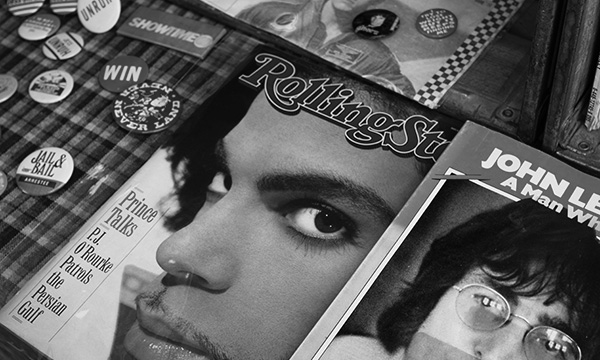
The Gear That Shaped Pop


The Fairchild 670 Compressor
The Fairchild 670 compressor remains an influential piece of studio gear in the history of pop music. Known for its warm and transparent sound, it was extensively used to control dynamics and add a polished sheen to vocals and instruments, contributing to the overall sound and depth of iconic pop recordings.
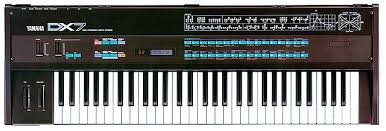

Yamaha DX7 Synthesizer
The Yamaha DX7 is a legendary synthesizer that had a profound impact on pop music, particularly during the 1980s. It introduced the world to Frequency Modulation (FM) synthesis, which offered a wide range of unique and expressive sounds. The DX7’s iconic electric piano sound, often referred to as the “DX7 Rhodes,” became a staple in countless pop songs of the era, shaping the sonic landscape of the decade.
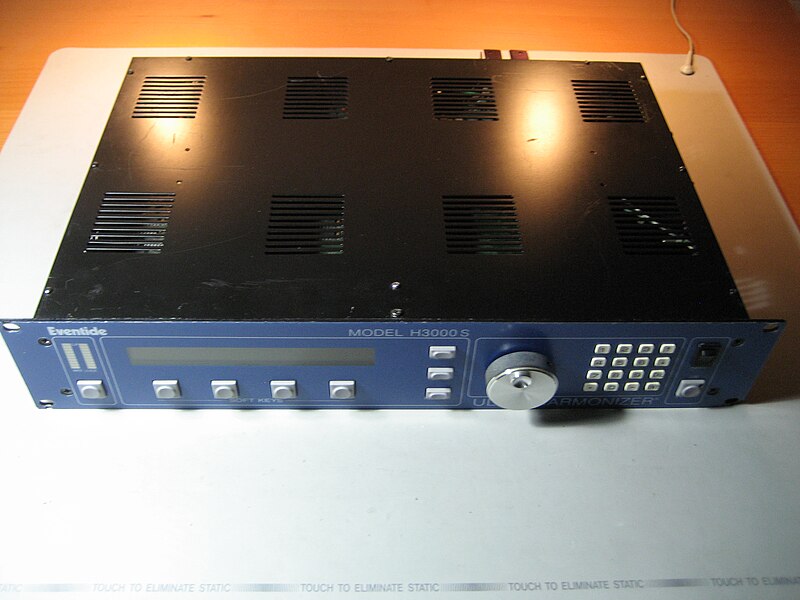

The Eventide H3000 Harmonizer
The Eventide H3000 Harmonizer, a versatile multi-effects processor, has made a significant impact on pop music. Its ability to create innovative and otherworldly sounds, including pitch shifting, harmonization, and time-based effects, has been instrumental in shaping the distinct sound of pop music. The H3000’s capabilities in transforming ordinary sounds into extraordinary sonic landscapes have made it a popular choice for producers seeking creative possibilities.
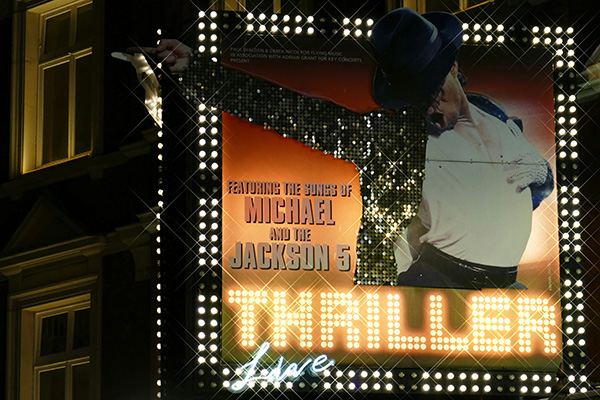

Famous Pop Artists
1950s – Known as the “King of Rock and Roll,” Elvis Presley became an icon of the 1950s pop music scene. His energetic performances, charismatic persona, and fusion of various musical genres, including rock, blues, and country, revolutionized popular music. Often referred to as “Ol’ Blue Eyes,” Frank Sinatra was a prominent figure in the pop music landscape of the 1950s. With his smooth vocal style and impeccable phrasing, he popularized the concept of the “crooner” and delivered timeless hits that continue to resonate with audiences today.
1960s – Hailing from Liverpool, England, The Beatles took the world by storm in the 1960s. Their catchy melodies, innovative songwriting, and charismatic charm captured the hearts of millions, making them one of the most influential and successful bands in pop music history. Known as the “Queen of Soul,” Aretha Franklin‘s powerful voice and emotional delivery made her an iconic artist of the 1960s. With hits like “Respect” and “Chain of Fools,” she brought soul music into the mainstream and became a symbol of female empowerment.
1970s – The Swedish pop group ABBA dominated the 1970s with their infectious melodies and catchy hooks. Their blend of pop and disco, showcased in hits like “Dancing Queen” and “Mamma Mia,” made them one of the most successful and enduring acts of the decade. Led by the charismatic Freddie Mercury, Queen pushed the boundaries of pop music in the 1970s. Their eclectic sound, combining elements of rock, opera, and theatricality, produced iconic songs like “Bohemian Rhapsody” and solidified their status as one of the greatest rock bands of all time.
1980s – The “King of Pop,” Michael Jackson, became a global sensation in the 1980s. With his electrifying performances, infectious dance moves, and chart-topping hits like “Thriller” and “Billie Jean,” he revolutionized pop music and left an indelible mark on the industry. Madonna emerged as a boundary-pushing pop icon in the 1980s. With her provocative image, confident persona, and a string of hits like “Like a Virgin” and “Material Girl,” she redefined the concept of the pop star and became a symbol of female empowerment.
1990s – Led by the enigmatic Kurt Cobain, Nirvana burst onto the scene in the early 1990s with their raw and grungy sound. Their album “Nevermind,” featuring the iconic track “Smells Like Teen Spirit,” propelled them to the forefront of alternative rock and became a defining moment for the decade. The Spice Girls became a global phenomenon in the late 1990s, bringing girl power and infectious pop music to the forefront. With their catchy tunes and empowering messages, they became one of the best-selling female groups of all time, leaving an indelible mark on pop culture.
2000s – Beyoncé rose to solo stardom in the 2000s after leaving the group Destiny’s Child. With her powerful vocals, captivating stage presence, and hits like “Crazy in Love” and “Single Ladies (Put a Ring on It),” she solidified her status as one of the most influential and successful artists of the decade. Eminem made a massive impact on pop music in the 2000s with his provocative lyrics and unique rap style. His albums, such as “The Marshall Mathers LP” and “The Eminem Show,” showcased his storytelling abilities and addressed controversial topics, making him one of the best-selling artists of the decade.
2010s – Adele her soulful voice and emotionally charged ballads captivated audiences in the 2010s. With her record-breaking album “21,” featuring hits like “Rolling in the Deep” and “Someone Like You,” she became a global sensation and received critical acclaim for her powerful storytelling through music. Taylor Swift transitioned from country to pop music in the 2010s, solidifying her position as one of the biggest pop stars of the decade. With her introspective songwriting, relatable narratives, and chart-topping hits like “Love Story” and “Shake It Off,” she became a role model for a generation of fans.
2020s – As we are currently in the 2020s, it is still unfolding, and it’s exciting to see new artists emerge and shape the pop music landscape of this decade. Some notable artists who have already made an impact in the early 2020s include Billie Eilish, Dua Lipa, and The Weeknd, to name a few. Their distinctive styles and boundary-pushing music continue to resonate with audiences and shape the direction of pop music in this era.
Three Sonic Qualities of Pop
Catchy Melodies
Pop music often features catchy and memorable melodies that are designed to appeal to a wide audience. These melodies are typically simple and easy to sing along to, making them instantly recognizable and enjoyable.
Rhythmic Elements
Pop music is known for its emphasis on rhythm. It often incorporates a consistent and noticeable rhythmic element that drives the song forward and encourages listeners to move and dance. The rhythmic elements in pop music contribute to its energetic and infectious nature.
Production Techniques
The sonic quality of pop music is often enhanced through various production techniques. These techniques can include the use of advanced recording and mixing processes to create a polished and professional sound. Pop music producers employ methods such as layering instruments, adding effects, and utilizing modern technology to achieve a sonically pleasing result.


Famous Pop Music Producers
Pop music has been shaped by numerous talented and influential producers throughout its history. Here are a few notable producers who have made a significant impact:
Max Martin
Max Martin, also known as Karl Martin Sandberg, is a Swedish producer who has worked with some of the biggest names in pop music. He has been behind numerous chart-topping hits for artists like Britney Spears, Taylor Swift, Katy Perry, and The Weeknd. Martin’s ability to create infectious melodies and catchy hooks has made him one of the most successful pop producers of all time.
Quincy Jones
Quincy Jones is a legendary producer who has worked across various genres, including pop, R&B, and jazz. He has collaborated with iconic artists such as Michael Jackson, Frank Sinatra, and Aretha Franklin. Jones’s innovative production techniques and keen musical instincts have earned him numerous accolades and made him a highly respected figure in the industry.
Rick Rubin
Rick Rubin is known for his diverse production work, spanning genres from hip-hop to rock. He co-founded Def Jam Records and has worked with artists like Beastie Boys, Run DMC, Johnny Cash, and Red Hot Chili Peppers. Rubin’s minimalist approach and ability to bring out the essence of an artist’s sound have made him a highly influential producer.
Three Production Tips & Techniques for Pop music
Catchy Melodies and Hooks
Pop music is known for its memorable melodies and catchy hooks. When producing pop music, focus on creating strong and infectious melodies that resonate with listeners. Craft hooks that are instantly recognizable and have the potential to get stuck in people’s heads. Experiment with different chord progressions, melodic motifs, and rhythmic patterns to create captivating and memorable musical phrases.
Polished Production and Mixing
Pop music often benefits from a polished and professional sound. Pay attention to the production and mixing aspects of your tracks to achieve a clean and balanced sound. Use techniques such as EQ, compression, and reverb to enhance the clarity and presence of individual elements in the mix. Ensure that the vocals are well-balanced and sit prominently in the mix, as they are a crucial element in pop music.
Incorporating Modern Production Elements
Pop music evolves with time, and it’s important to stay current with the latest production trends and techniques. Experiment with modern production elements such as electronic sounds, vocal effects, and rhythmic patterns to give your pop tracks a contemporary edge. Stay updated with the latest plugins, software, and production tools to explore new sonic possibilities and push the boundaries of your sound.
Famous Pop Audio Engineers
There are several renowned mixing and mastering engineers who have made significant contributions to the world of pop music. While it’s challenging to narrow it down to just a few, here are some notable names:
Max Martin
Although primarily known as a producer and songwriter, Max Martin has also been involved in mixing and mastering many of his own productions. His meticulous attention to detail and ear for sonic perfection have contributed to the success of numerous pop hits.
Serban Ghenea
Serban Ghenea is a highly sought-after mixing engineer in the pop music industry. He has worked with a wide range of artists, including Taylor Swift, Ariana Grande, and Dua Lipa. Ghenea’s expertise lies in creating polished and radio-ready mixes that enhance the impact and commercial appeal of the songs.
Emily Lazar
Emily Lazar is a renowned mastering engineer who has worked on many notable pop albums. She has collaborated with artists such as Sia, Coldplay, and Haim. Lazar’s mastering skills ensure that the final mixes translate well across different playback systems and deliver a cohesive and balanced sound.
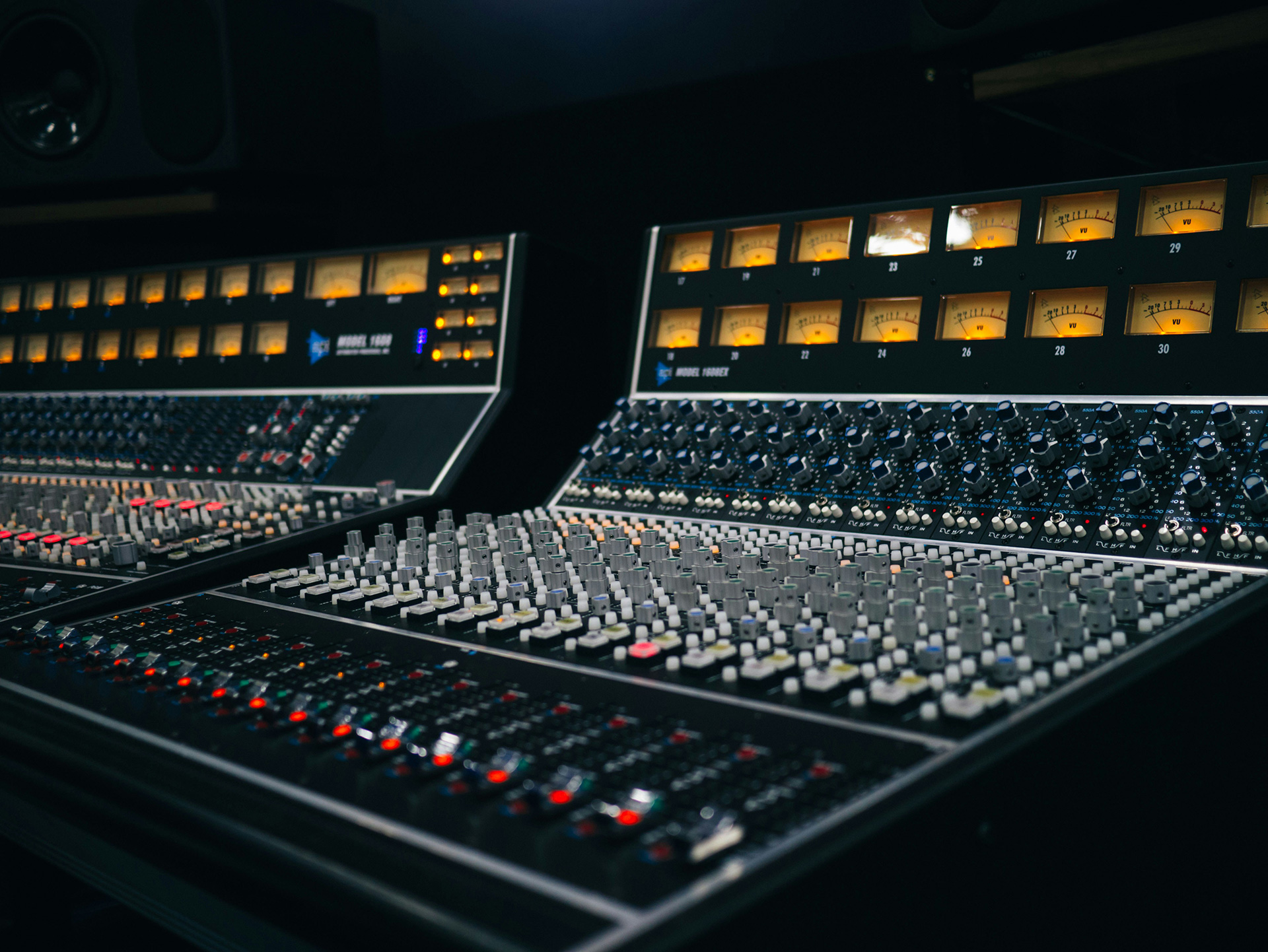

Three Mixing & Mastering Tips for Pop Music
Automation
Automation is a powerful technique in mixing pop music. It allows you to control the volume, EQ, effects sends, and other parameters of individual tracks throughout the song. Use automation to create dynamic and engaging mixes, especially for vocals, drums, and bass. Experiment with automating different elements to add movement and impact to your mix.
Gradual Dynamic Range Reduction
Pop music often benefits from a controlled dynamic range to ensure a consistent and impactful sound. Instead of using excessive compression on a single compressor, consider using a sequence of slight compression with multiple compressors in a row. This approach allows for more accurate and transparent compression, resulting in a better-sounding master
Balancing Loudness and Dynamics
Achieving the right balance between loudness and dynamics is crucial in pop music production. While loudness is important for a competitive sound, it’s equally essential to preserve the dynamics of the music to keep it engaging. Leave adequate headroom in your mix to allow for proper dynamics processing during mastering. This ensures that the mastering engineer can apply compression, limiting, and other dynamic processing techniques without compromising the audio quality.
Why Hire a Professional Audio Engineer or Producer for Mixing and Mastering Pop Music?
While it is possible to learn and do mixing and mastering hiphop yourself, hiring a professional can provide a level of expertise, objectivity, and efficiency that can greatly benefit your pop music production.
Expertise and Experience
Professional audio engineers have the technical knowledge, skills, and experience to bring out the best in your music. They understand the intricacies of mixing and mastering, including EQ, compression, spatial effects, and more. Their expertise ensures that your music sounds polished, balanced, and professional.
Industry Standards and Trends
Professional audio engineers stay up to date with the latest industry standards and trends in mixing and mastering. They understand the sonic characteristics and expectations of pop music and can help you achieve a competitive and commercially appealing sound.
Objective Perspective
As the creator of the music, it can be challenging to maintain an objective perspective during the mixing and mastering process. A professional audio engineer brings a fresh set of ears and a critical perspective to your project. They can identify and address any issues or areas for improvement that you may have missed.
Access to Specialized Tools and Equipment
Professional audio engineers have access to high-quality tools, plugins, and equipment specifically designed for mixing and mastering. They can utilize advanced techniques and processors to enhance the clarity, depth, and overall sonic quality of your music.
Time and Efficiency
Mixing and mastering can be time-consuming processes that require attention to detail. By hiring a professional audio engineer, you can save valuable time and focus on other aspects of your music career. They have the expertise and workflow efficiency to deliver high-quality results in a timely manner.